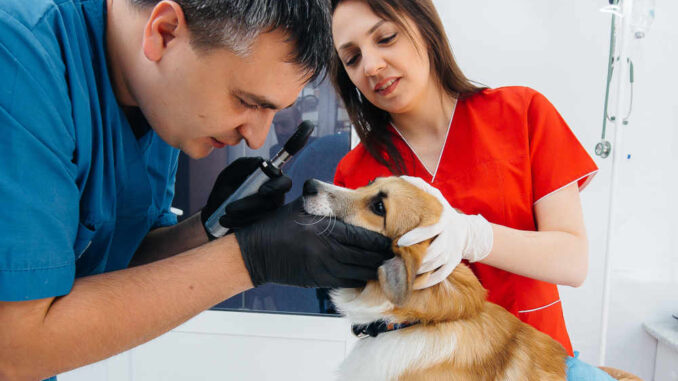
This article was updated on July 30th, 2023
If your dog has a red or swollen eye, you may be worried that they have an eye infection. The dog eye pictures below can be used to help you determine what may be the eye issues that your dog is experiencing and if it is an eye infection. As always, if you have any questions or concerns regarding your dog’s health, you should speak to your veterinarian.
9 signs that your dog has an eye infection [with pictures]
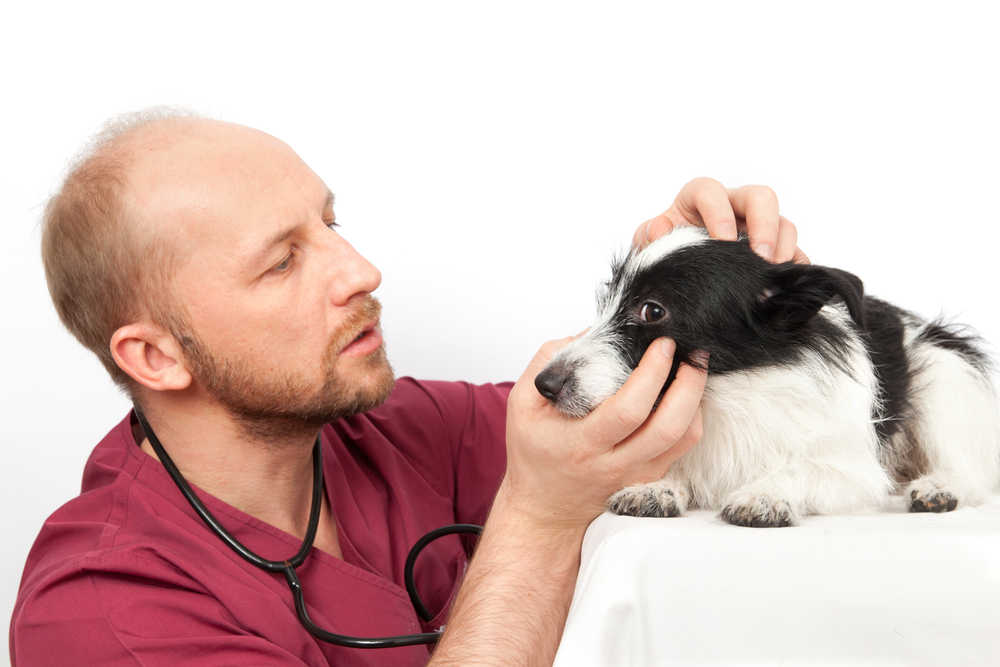
Below are common signs observed in dogs with eye infections:
1. Red, swollen eyelids. A dog with an eye infection may hold the infected eye closed.
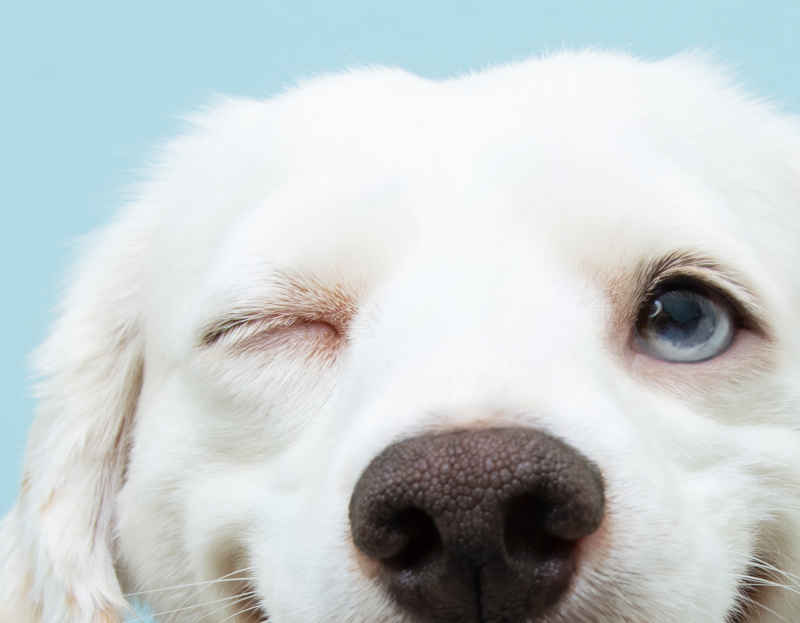
2. Red conjunctiva. Dog eyes with infection may appear red around the edges of the eyelids with swelling and irritation.
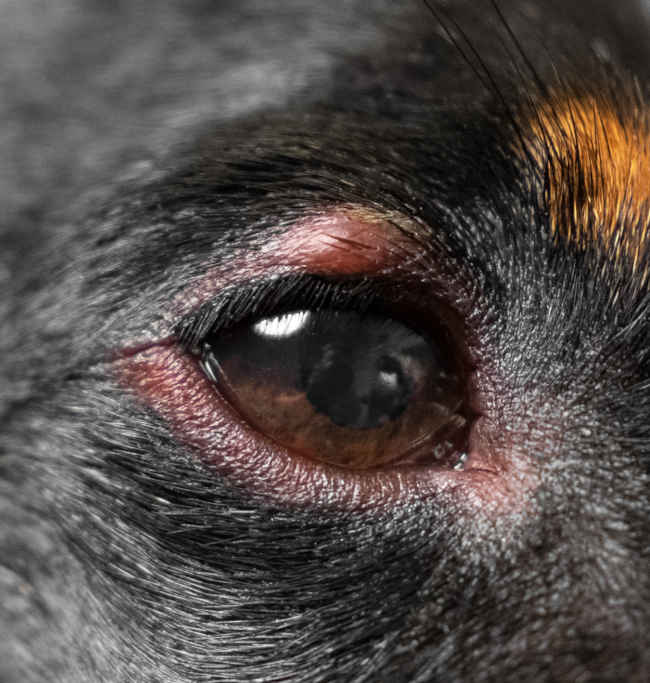
3. White, green, or yellow discharge. The infected eye may have white, green, or yellow material streaming out of the corner.
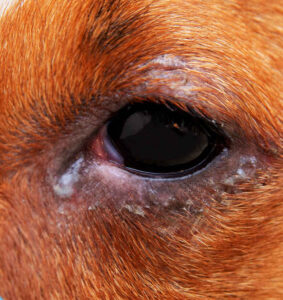
4. Crusty materials around the eye. An infected dog’s eye may be surrounded by crusty material.
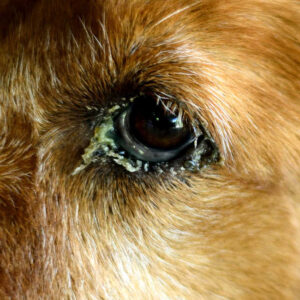
5. Inflamed third eyelid. Some dogs with infected eyes will have swollen and irritated third eyelids.
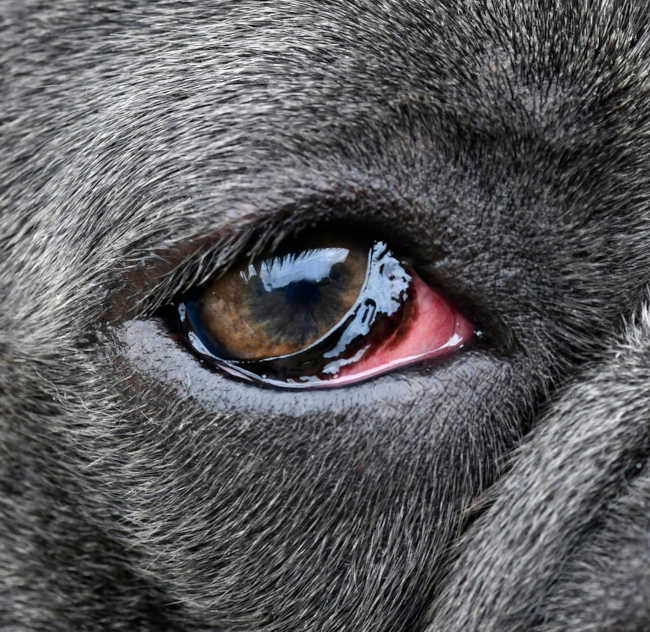
6. Swollen conjunctiva.
Swollen conjunctiva in the eye is commonly seen in dogs with infected eyes. Click here to see a picture of swollen conjunctiva (warning – this picture may not be appropriate for sensitive viewers).
7. Redness, swelling, and eye discharge. Eye infections may cause a combination of the above signs, with redness, swelling, and eye discharge.
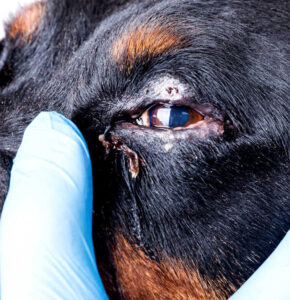
8. Redness and prominent blood vessels in the white part of the eye. The whites of the dog’s eye may appear red, or the blood vessels may be enlarged (Injected sclera).
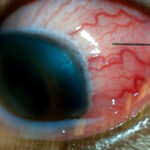
9. Hair loss and irritation around the eye.
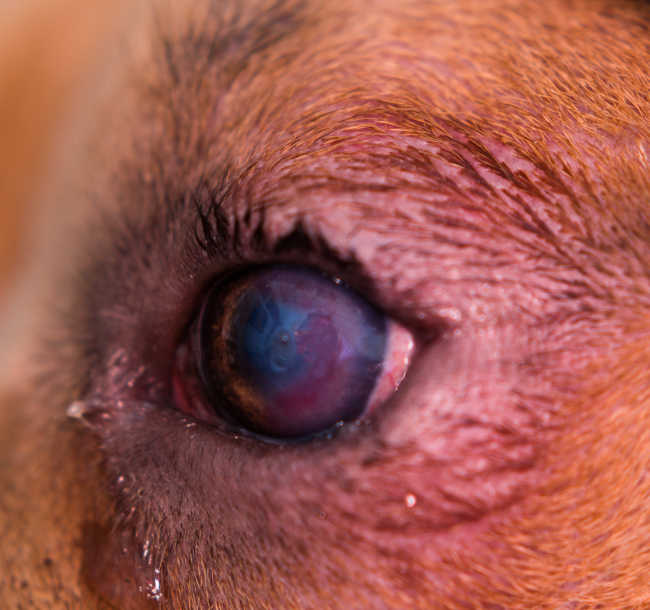
Pictures of 5 Common Eye Infection & Eye Issues in Dogs
1. Conjunctivitis
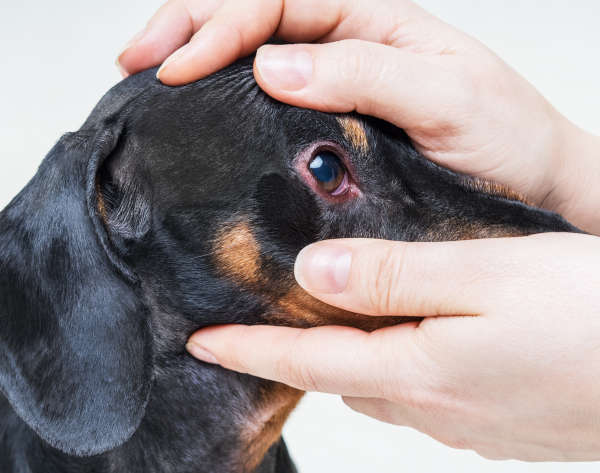
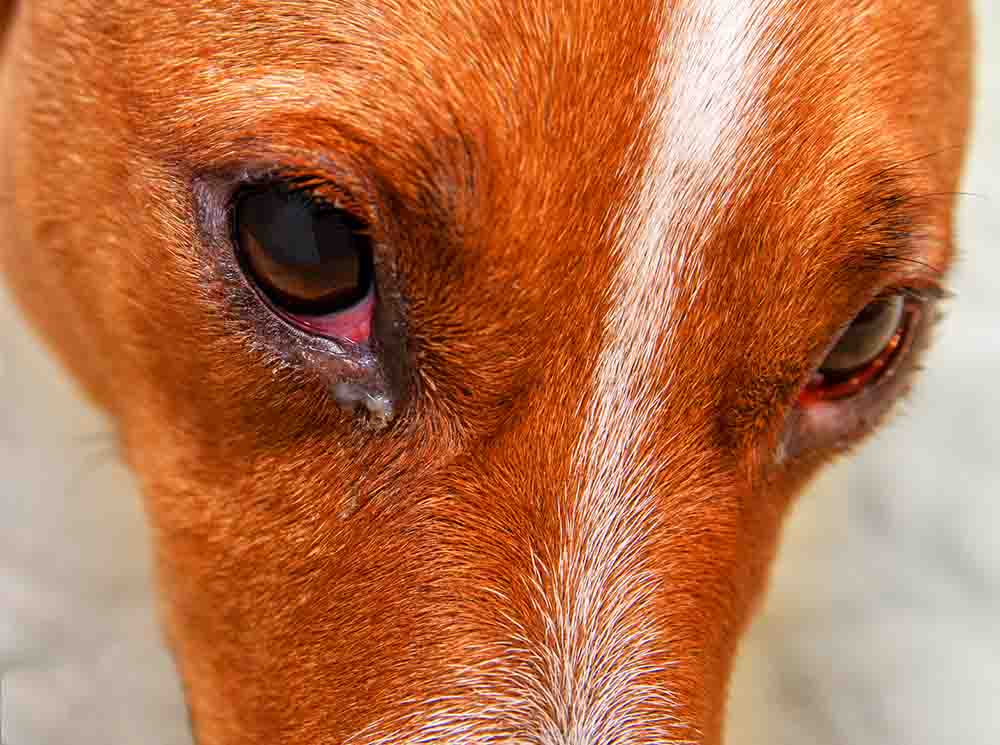
Better known as “Pink Eye”, conjunctivitis is inflammation of the lining to the eye lids and the thin covering of the eyeball. It can be caused by a viral, bacterial, or fungal infection or by irritants or allergies. Dogs will usually have red, swollen tissues around the eye and redness to the eyeball itself. Conjunctivitis can range from mild to severe, depending on the cause.
Prescription antibiotic dog eye drops will often cure most cases of conjunctivitis. More severe cases will benefit from anti-inflammatories as well.
2. Keratitis
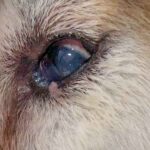
Keratitis is inflammation or infection of the clear part of the eye, known as the cornea. This type of eye infection can be caused by a virus, bacteria or fungus. Affected eyes will be watery, red, and may have a thick, colored discharge. The eyeball itself may also appear blue. Dogs may rub or paw at their eye, which can lead to injuries.
Most cases of keratitis will clear up with proper treatment, however some cases may lead to corneal injuries which can become very serious if left untreated.
3. Corneal ulcers
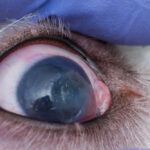
While not technically an eye infection on its own, corneal ulcers have the potential to become infected and very serious. Corneal ulcers can lead to loss of the eye if they aren’t treated properly. Corneal ulcers are holes or abrasions to the clear part of the eye, usually caused by trauma. Bacteria or viruses can move in and cause an infection in the ulcerated part of the eye. Corneal ulcers are painful, causing dogs to squint, have light sensitivity, and to paw or rub their eye. They will have watery or colored discharge and the eye will look blue or like a spiderweb of red as it heals.
Corneal ulcers need to be treated by a veterinarian with eye drops and potentially surgery. Even minor corneal ulcers can lead to big trouble without treatment. View more pictures of eye ulcers in dogs, with veterinary information.
4. Cherry eye
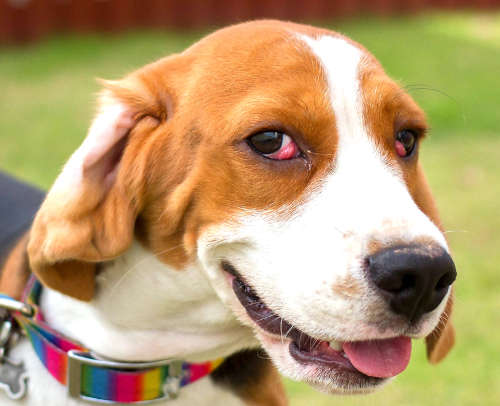
This is rather the cause of an eye infection, not the infection itself. Cherry eye is when the tear-producing gland located in the inner corner of the eye slips out from under the third eyelid and is visible in the eye. This may cause inflammation that blocks tear ducts and leads to infection. Dogs will show up with a bright red bump in the inner corner of their eye. They’re usually not painful but may rub or paw at it. They may also have colored discharge.
Cherry eye can sometimes be relieved at home by decreasing the swelling with cold packs. However, this is often a temporary fix and veterinary care will be needed. Veterinarians will treat with antibiotic eyedrops and a surgical fixture of the gland back in place. This gland is responsible for about half of the eye’s tear production, so if left untreated, chronic dry eye can occur.
5. Uveitis

Now let’s get to the inner parts of the eye. The uvea refers most of the structures we see inside the eye, including the iris. Inflammation of these structures can be caused by infections. Dogs with uveitis are very painful and will keep their eye closed when possible. They have extreme light sensitivity and a lot of tearing. Eyes may appear cloudy or have blood or pus visible inside. See your veterinarian for medicated dog eye drops and anti-inflammatories.
Steps You Can Take at Home
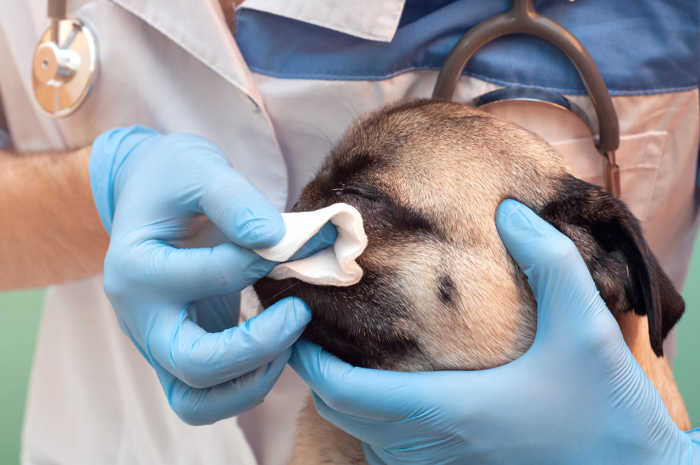
There are a number of things that may result in an irritated or red eye in a dog. Eye infections are common, but more serious issues such as glaucoma, clotting disorders, allergies, foreign material in the eye, cancer, and systemic illnesses can also be the culprit. If your dog has an irritated eye, you should make an appointment with their veterinarian as soon as possible.
Eye infections will require treatment with antibiotics or antivirals. While you are waiting to take your dog to the veterinarian for their appointment, you can try to ease their discomfort by:
- Making a warm compress for the eyes with a moist and warmed washrag. Ensure the washrag is not hot to the touch and never for the dog to have it over their eyes if it is uncomfortable for them.
- Gently wipe any discharge from the area surrounding the eyes.
Never administer any medications, either into the eye or by mouth, without consulting with your veterinarian.
When You Need to Call the Veterinarian
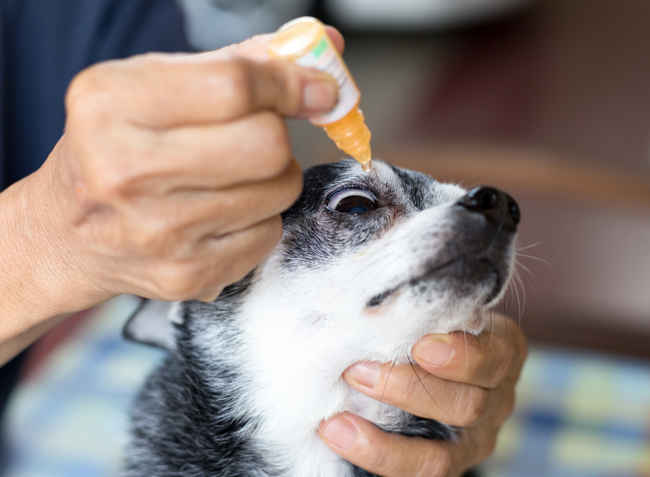
A veterinarian should see all eye issues in dogs. Untreated infections, glaucoma, cancer, and foreign material in the eye may lead to permanent damage and blindness. Eye issues are also very painful and should be treated early and aggressively to ease the dog’s discomfort.
Related posts:
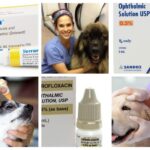 Best Antibiotics to Fight Eye Infections in Dogs (Pros and Cons) - Eye infections in dogs are one of the most common issues in my veterinary clinic. I see a dog squinting… [...]
Best Antibiotics to Fight Eye Infections in Dogs (Pros and Cons) - Eye infections in dogs are one of the most common issues in my veterinary clinic. I see a dog squinting… [...] Is It a Dog Eye Allergy or an Eye Infection? How to Tell the Difference - A Vet Explains How to Tell the Difference Your pup comes to you with runny eyes, squinting, and a pitiful… [...]
Is It a Dog Eye Allergy or an Eye Infection? How to Tell the Difference - A Vet Explains How to Tell the Difference Your pup comes to you with runny eyes, squinting, and a pitiful… [...]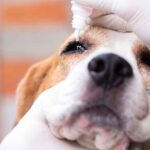 How to Treat Dog Eye Infections at Home, According to a Vet - The eyes are important and delicate organs. Unfortunately, they’re not immune to infections and other issues. Actually, eye infections are… [...]
How to Treat Dog Eye Infections at Home, According to a Vet - The eyes are important and delicate organs. Unfortunately, they’re not immune to infections and other issues. Actually, eye infections are… [...]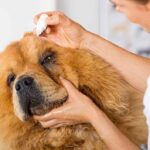 Best Dog Eye Drops for Infections & Allergies [Vet Reviews] - Watery, red eyes are a common occurrence in nearly every veterinary practice. So much so, that I likely see an… [...]
Best Dog Eye Drops for Infections & Allergies [Vet Reviews] - Watery, red eyes are a common occurrence in nearly every veterinary practice. So much so, that I likely see an… [...]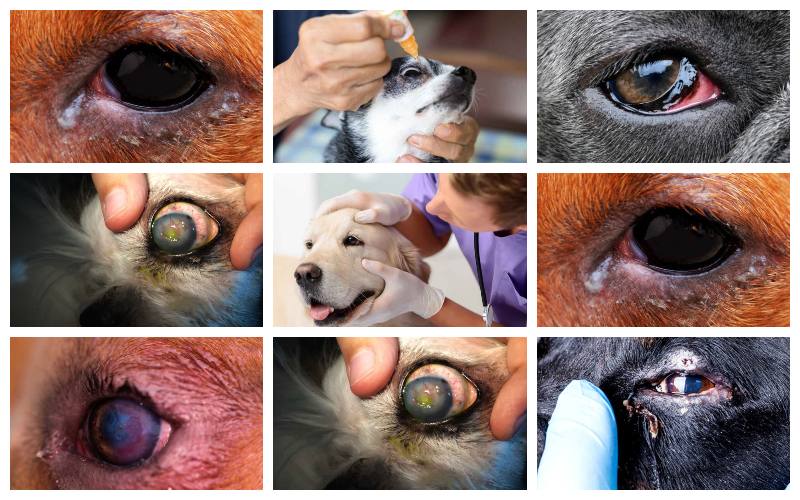
Disclaimer: This website's content is not a substitute for veterinary care. Always consult with your veterinarian for healthcare decisions. Read More.


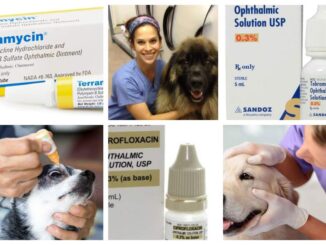
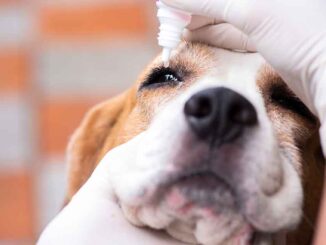

Be the first to comment